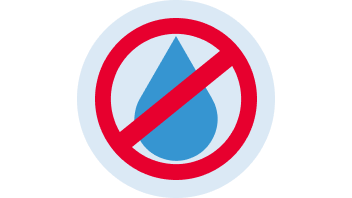Drought
Drought is slow to occur and caused by a combination of factors such as lack of rain, high temperatures and increased demand for water.
Hazard information
Factors that affect drought conditions include:
- lack of rain
- warmer temperatures
- increased evaporation
- increased human water use
Droughts can lead to:
- lower water levels in lakes, streams and rivers
- reduced soil moisture and groundwater levels
- declines in drinking water supply
- loss of commercial, industrial and agricultural production
- declines in water quality and reduced hydroelectric production
- declines in tourism, recreation and shipping
- loss of fish and wildlife habitat
Stages of low water conditions
The Ministry of Natural Resources and conservation authorities monitor precipitation, stream flow and water levels regularly to gauge water conditions.
Based on what they learn, they assign one of three warning levels to the situation:
- Level 1 – the potential for water supply problems is identified
- Level 2 – minor water supply issues are encountered
- Level 3 – supply may no longer meet demand; social and economic impacts are anticipated
Local government response to drought and low water levels can range from water conservation messaging to water use restrictions.
For more information on drought and your safety, visit the Low water response program page.
Safety tips
If you are experiencing a drought, follow your local municipality’s instructions for obtaining water.
If you are a homeowner or renter:
- repair all leaks in taps and toilets
- install low consumption toilets, dishwashers, shower heads, etc.
- follow municipal water use restrictions (for example: lawn watering, car washing)
- choose drought-resistant trees and plants
- wash only full loads of laundry or dishes
If you are a farmer:
- check your irrigation systems regularly for leaks
- irrigate in the evening or later in the day when temperatures are lower and there is less evaporation loss
- avoid irrigating during windy conditions
- use rain gauges to measure how much water your crops are getting
- ensure the irrigation system doesn’t water faster than the ground can absorb it
If you work in the agricultural or manufacturing industries:
- set up a water conservation program
- survey plant operations
- determine ways to increase efficiency
Prepare now
Take the following steps so you and your family are prepared in the event of a drought:
- Install rain barrels to collect rain water from the roof which can be used to water gardens and flush toilets during a time of water shortage.
- Stock pile water required for human and pet consumption or hygiene during periods of normal water availability by filling containers from a safe water source or purchasing.
- Be aware of seasonal influences on water levels, e.g. ground water levels are usually highest during spring as a result of precipitation and runoff.
- Monitor rain gauges, well water and/or municipal notices regarding community water consumption.
